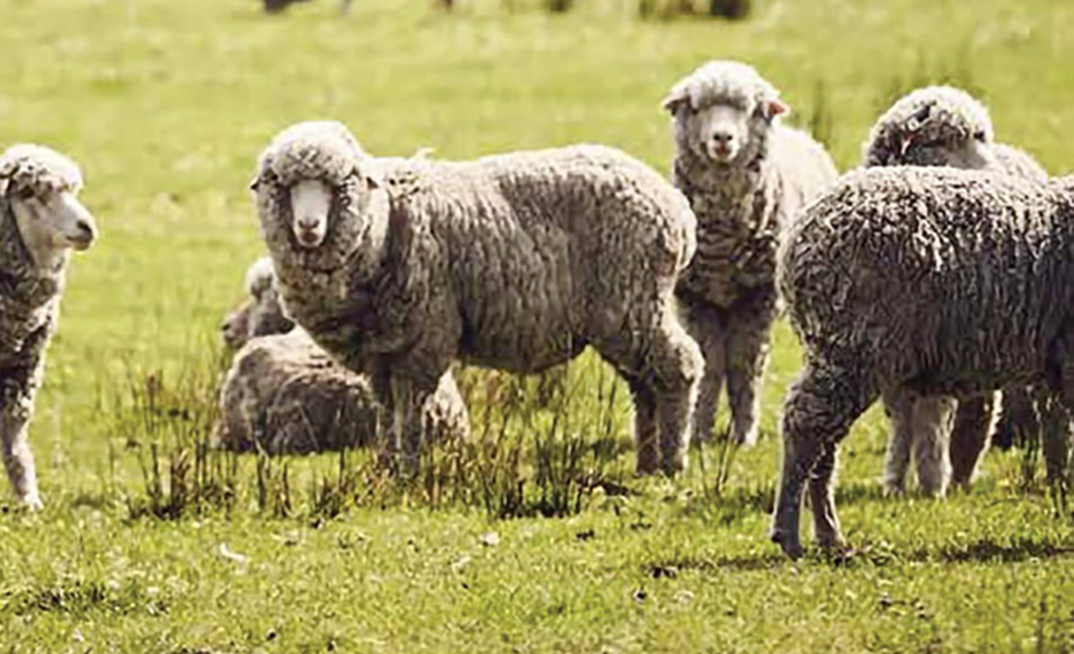Australian Wool Innovation (AWI) has developed a range of publications and tools that woolgrowers can look to when supplementary and containment feeding sheep.
Containment areas can be used to feed and manage sheep during times of low pasture availability or to manage sheep and pasture through their production cycles. Containment areas are designed to be used as a short-term management strategy and once targeted pasture quality and quantity is available, stock will typically be released. The practice is commonly referred to under the names sacrifice area, droughtlot or containment area.
Each business will use containment feeding differently due to the range of outcomes it can provide as a livestock management tool. Containment feeding can minimise pasture and environmental damage from overgrazing, defer the grazing of pastures at a season break, reduce the labour costs associated with hand-feeding sheep, allow for management of condition score with targeted feeding regimes and reduce sheep energy requirements.
As with all things in sheep and wool production, all situations will be different. It is always important to seek specialist advise as appropriate in preparing and managing sheep through supplementary feeding programs and, in particular, containment feeding.
Following are some great resources for containment feeding:
Getting started
Early consideration must be given to the extra resources required to containment feed, including plant, infrastructure, storage, handling and delivery of feed and water and the ability to effectively monitor and manage the health and welfare of sheep.
However, establishment of a containment area need not be an expensive exercise. If possible, aim to use existing facilities or if additional facilities need to be constructed, try to ensure that they can be useful outside of containment feeding. On most farms the containment area should be able to be incorporated into existing infrastructure to reduce the cost and increase the return. Outlined in the publication ‘Managing sheep in droughtlots', some factors to consider when deciding where to build include:
- Drainage
- Shelter
- Convenience to facilities
- Reliable access to adequate quality water supply
- Minimum distance from water storages and water courses
- Privacy
The alternative to establishing a specific facility is to use a ‘sacrifice' paddock. This can be a degraded pasture paddock that is scheduled to be grazed or renovated, or a stubble paddock with a yearly supply of roughage and straw which is useful in preventing soil loss from either wind or water. However, whole paddocks can become bare and subject to damage from erosion. If mob sizes become too large, several paddocks may need to be sacrificed, again increasing the area of potential damage. This may be necessary to separate weaners, ewes, tails of mobs or based on pregnancy status to supplementary feed more accurately to their requirements.
AWI's feeding and managing sheep resources can be found at www.wool.com/feeding
Managing sheep in droughtlots
This publication covers a range of information and case studies, from construction options and designs, lessons learned, mortality causes and mitigation strategies, stocking density, mob size, tail of mob management, feeding roughage, animal health, effect on wool quality and the release of sheep from containment.
Feeding and managing sheep in dry times
This publication aims to provide farmers with practical guidelines and examples for feeding and managing sheep during dry seasons and drought years.
Everything from feed budgeting, deferred grazing, the economics of feeding, containment area establishment, principles of nutrition for sheep demands and feed supply, animal health and welfare and production feeding is covered.
Whilst the publication focuses on dry times and containment feeding systems, it also includes useful information on getting through a feed gap period.
Managing fodder prices for drought
Adequate preparation for droughts and successful management during a drought not only requires a sound knowledge of the amount and type of feed, but also forward planning and decision-making on how much fodder will be stored in advance on-farm and fodder buying strategies during a drought. This publication runs through on-farm fodder requirements, approaches to drought fodder supply, options for managing supply and process risks, costs of storing fodder, fodder type and how to pull it all together.
Releasing sheep from containment feeding
The release of sheep from containment is just as important as correctly establishing a containment area and managing within it. This transition to pasture must be done carefully to minimise the risk of animal health issues, particularly for pregnant ewes, as well as ensuring that wool quality is not affected.
This publication discusses the paddock conditions for releasing sheep where feed on offer (FOO), pasture growth rates and the quality of pastures must be considered in combination.
Additionally, the animal requirements (including condition score, nutrition, time of lambing and other farm operations) are all important components to consider in the decision to release sheep from containment feeding.
More information:
To stay up to date with AWI communications go to www.wool.com/communications and follow AWI on Twitter @woolinnovation, Facebook @AustralianWoolInnovation and Instagram @australianwool
This information should only be used as a general aid and is not a substitute for specific advice. To the extent permitted by law, we exclude all liability for loss or damage arising from the use of the information in this publication. ©2021 Australian Wool Innovation Ltd. All rights reserved. Australian Wool Innovation Ltd gratefully acknowledges the funds provided by the Australian government to support research, development and marketing of Australian wool.
ABOUT THIS COMPANY
Australian Wool Innovation
Our mission is to make strategically targeted investments to enhance the profitability, international competitiveness and sustainability of the Australian wool industry.
HEAD OFFICE:
- Level 6, 68 Harrington Street, The Rocks, Sydney, NSW, 2001, Australia
- Phone: 282953100
- Website: www.wool.com
- Email: feedback@wool.com
























